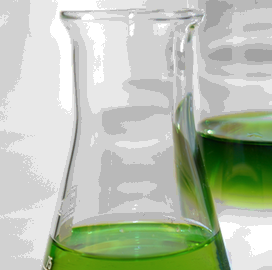Algae aimed at treatment
 Urban Utilities is spearheading a research project aimed at revolutionising wastewater treatment using algae.
Urban Utilities is spearheading a research project aimed at revolutionising wastewater treatment using algae.
With a $5 million joint investment, the project aims to support sustainable population growth in regional and rural Australia.
Algae, responsible for producing half of the world's oxygen, have a natural affinity for feeding on nutrients present in wastewater.
While algae have been used in regional Australia for wastewater treatment, the technology has not seen significant advancements since the 1970s.
One major challenge is the slow and inefficient process.
To address this, Urban Utilities has collaborated with industry experts to enhance the algae's purification capabilities and make them “speed eaters”, allowing for wastewater treatment up to five times faster.
The innovative technology is currently being implemented at Urban Utilities' Helidon Resource Recovery Centre in the Lockyer Valley near Brisbane.
By increasing the capacity of regional facilities to treat wastewater without extensive infrastructure upgrades, this breakthrough has the potential to support sustainable population growth across regions.
Additionally, the technology can be retrofitted to existing plants, making it suitable for nationwide deployment.
According to Urban Utilities spokesperson Anna Hartley, trials for the new process began in 2019 at the company's Innovation Precinct in Brisbane.
The process involves using bacteria to break down the wastewater, making it more accessible for the algae. The treated wastewater is then transferred to algae raceways - long, shallow ponds that optimise treatment conditions and keep the algae in motion while they consume the nutrients.
Dr Andrew Ward from The University of Queensland, a collaborator on the project, says this integration of processes is a first in Australia.
Following successful smaller-scale trials, billions of algae have been transported to a demonstration-scale plant in Helidon, where they are effectively treating the town's wastewater.
In addition to wastewater treatment, algae possess tremendous potential for producing sustainable products, such as shoes, bioplastics, fertilisers, building materials, and even jet fuel.
The research project received support from the Commonwealth Government in the form of a $1.4 million Cooperative Research Centre Projects (CRC-P) grant.
The collaborative effort involved partners such as The University of Western Australia, Northern Territory Power and Water Corporation, Aquatec Maxcon, Lockyer Valley Regional Council, and the Department of Environment and Science.








 Print
Print